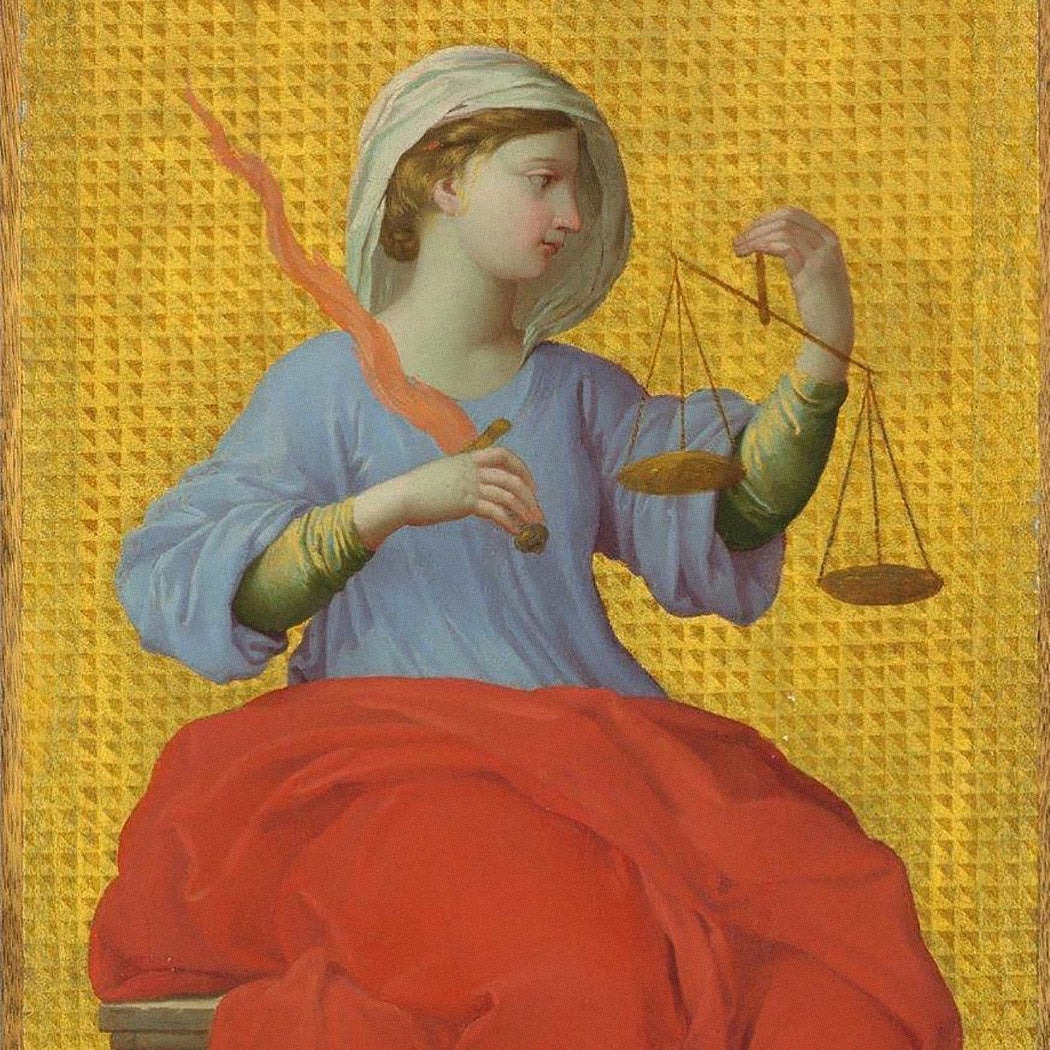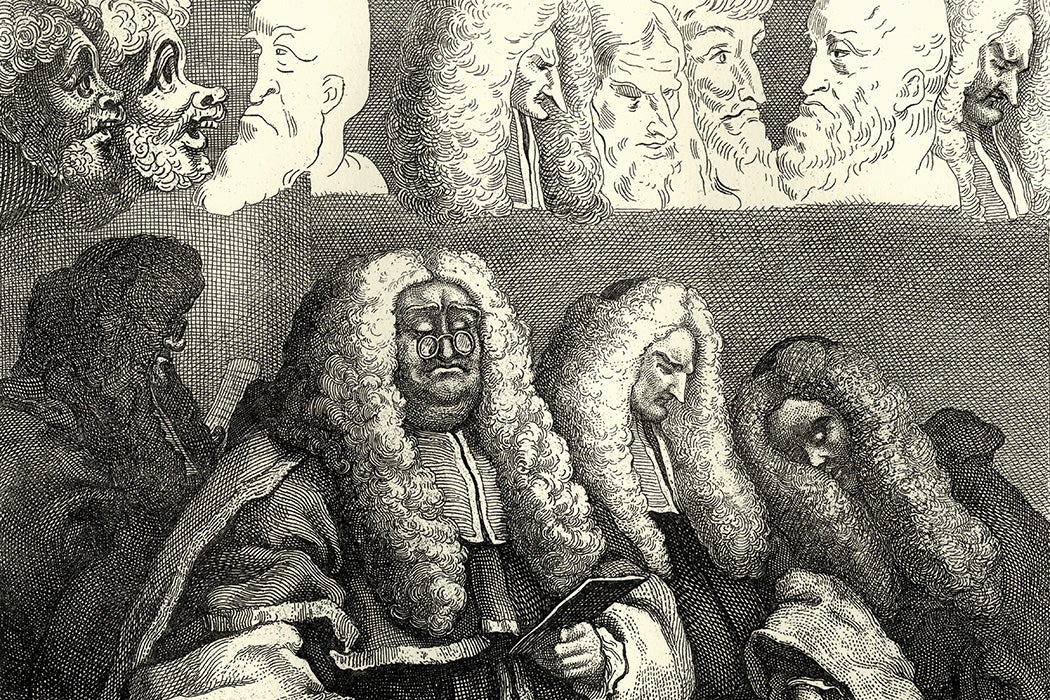In 1959, as a response to what was commonly known as the Wolfenden Report, Lord Devlin, an English judge, delivered the Maccabaean Lecture in Jurisprudence at the British Academy. The lecture that would later be published as The Enforcement of Morals. The Wolfenden Report was more correctly called the Report of the Committee on Homosexual Offences and Prostitution. Two years before Devlin’s lecture, the Committee had recommended by a majority of 12 to 1 that, in Britain, “homosexual behaviour between consenting adults in private should no longer be a crime.” Devlin’s objections to this recommendation would spark a passionate public debate between himself and H. L. A. Hart, Professor of Jurisprudence at Oxford University.

In his lecture, Devlin countered the Wolfenden Report, arguing that law should both be and is used “to achieve uniformity” in society. He went further, stating that the laws against homosexuality were there because the strong feeling of “disgust” was “deeply felt” in society. The presence of disgust, he claimed, “is a good indication that the bounds of [tolerance] are being reached… No society can do without intolerance, indignation and disgust; they are the forces behind the moral law.”
“It is generally accepted,” he continued, “that some shared morality… is an essential element in the constitution of any society. Without it there would be no [social] cohesion.”
Weekly Newsletter
After Lord Devlin’s lecture, Hart, who described himself privately in letters to friends as a “suppressed homosexual,” felt compelled to speak out on BBC radio. As he would state in an interview in later life, he had felt obligated to act because, as he put it: “I think Devlin’s arguments are really bad and misleading and enable reactionary people to claim a philosophical mantle.”
Hart, in his response to Devlin, agreed with the Wolfenden Report’s statement that “there must remain a realm of private morality or immorality which is, in brief and crude terms, not the law’s business.” This idea, Hart argued, had a close connection to John Stuart Mill’s doctrine in his essay On Liberty that stated, “the only purpose for which power can be rightfully exercised over any member of a civilized community against his will is to prevent harm to others.”
Hart was a legal positivist, meaning that he took a social scientific approach to the law, regarding the law as a social fact. What the law is, he argued, and what it ought to be are two distinct questions. As he would argue in his famous The Concept of Law, morality may influence the law, but laws and morals are distinct social phenomena.
In what would become known as Hart’s “separability thesis,” he argued that a law such as the one as obligates a person drive on the right-hand side of the road might be a good law, but it is not a moral principle. One would never go to Britain and say, my morality commands me to drive on the right, and I feel morally compromised driving on the left. Morality can, he argued, influence the law, but it is not synonymous with the law. On the other hand, laws against dangerous driving (or, say, murder), for example, are no doubt influenced by morality, but they are also part of social-bureaucratic order. And well-ordered states are not necessarily moral states. Devlin’s claim that laws are there to enforce morality was, Hart pointed out, simply factually incorrect.
But the problem Hart had with Devlin’s argument were deeper than Mill’s doctrine and his separation of law and morality. Hart was also, along with his great friend Isaiah Berlin, one of the most important twentieth century liberal philosophers who believed in an open, free, democratic, and plural society. Within these societies, both Hart and Berlin argued, are differing moral codes and beliefs. Berlin articulated what was a constant theme in Hart’s writings: that moral principles are incommensurate and often come into direct conflict with one another. One example of this conflict can been in the debate around abortion: pro-life and pro-choice (among others) are conflicting positions, but they both come from a recognizable moral framework.

To this problem, both philosophers suggested that an open, tolerant, and democratic society was the only moral solution (ironically). “Plural moralities in the conditions of modern large scale societies,” Hart wrote, “might perfectly well be mutually tolerant.” And in fact, “there actually are divergent moralities living in peace” in almost all open democratic societies.
For social cohesion to exist in a society, Hart argued, there is no need for the law to impose a singular “seamless web” of morality over its people, as Devlin had claimed. In fact, to live in a state of freedom, we must be allowed to choose our own moral systems. The law should not impose one way of life on people, a way of life that denies them perfectly harmless and consensual actions in private. As Hart argued in his Liberty, Law and Morality, the private sphere is neither the law’s business, nor society’s.
When asked in an interview if he saw Devlin as threatening liberalization, Hart answered:
He was. Although paradoxically I got to know him and quite liked him… After he produced his arguments against me and Mill, he then wrote a letter to The Times saying he thought the law [on homosexuality] ought to be altered.
In many ways Devlin’s letter was one of the success stories of the liberalization process in mid-twentieth century Britain. Like his friend Isaiah Berlin, Hart was never afraid to discuss issues openly with those who held divergent views. And Devlin’s letter is a testament to just how open and engaged dialogue (and even friendship) can be a persuasive force in society.
It was in this spirit that Hart addressed the issue of abortion in several lectures. For Hart, moral pluralism meant that there was nothing necessarily wrong with a society that contained within it divergent views on the morality of abortion. As he said in the interview mentioned above, “I can see how Catholics might object to abortion.” His legal positivist beliefs did not allow him into any obfuscation of facts. As he openly acknowledged, medical facts confirm that “the physical structure… of a foetus is remarkably similar to that of a new born baby” and “the legal facts are those which show that the law recognises the unborn foetus as having rights.”
He would also go on to caution those who dismiss out of hand that the “foetus is at any stage a person,” suggesting that this position had led to a failure to convert “many to a different view of the moral status of the foetus.” But, he pointed out, “only rarely has English law equated any form of abortion with murder.” Hart’s point was that, in England, some traditional belief, that can be seen in the law’s formulation, held that there was some distinction between a foetus and a new-born baby.
He also pointed out that what is now commonly called a “pro-choice position” is most often held by people who do not disregard the sanctity of human life. “Many of those who have campaigned for the relaxation of [the abortion] law,” he pointed out, are quite often “opponents of capital punishment and pacifists.” As he went on, “similarly, at the national level, the Scandinavian countries who have been the foremost and most consistent supporters of liberalisation of the law were also among the earliest to abandon capital punishment.”
Hart believed that a free society should allow for morally autonomous choice on matters such as homosexuality and abortion. But all laws, he believed, should be scrutinized for what harm they might cause. Hart in this pursuit addressed the issue of the harm that the abortion laws produced in Britain before their liberalization in 1967. In 1950s and 60s, it was thought that around 10,000 illegal abortions took place in Britain per annum. This meant that, in 26 years, 260,000 women from all walks of life were guilty of a crime punishable by a prison sentence. But when Hart looked at the statistics, he discovered that there were only around 55 convictions each year. This, to Hart, suggested that the society had little interest in upholding this law, and that it had become a dead letter. He also pointed out that illegal abortion was part of a “high profit criminal industry,” which offered “targets for the blackmailer and corrupting temptations to law enforcement agencies.”
As he discussed this issue in front of an Australian audience in 1971, he pointed out that relaxation of abortion laws in Britain were at least in part helping to solve the problem of “unwanted children, particularly illegitimate children, the reduction of maternal mortality through illegal abortion, and the reduction of illegal abortion.”
Hart would not allow himself to disregard the negative impact of liberalization. There had been, he observed, “the growth of a vast private sector where often very high fees are charged and large profits may be made by doctors.” This industry was bound to compound unwanted inequality in society, creating one “abortion law for the rich and another for the poor.” He also had “not the slightest doubt that a large scale racket has developed in this sector.” Doctors were making significant amounts of money at the expense of the unhappiness of women.
Abortion law reform, Hart would go on to say, was not like the relaxation of the law against homosexuality. It had deeply significant social impacts that must be addressed by government. It required “careful planning of available resources” and “should be accompanied, and if possible preceded by a really effective provision of free contraceptive services and education in their use.”
Consistent with his separability thesis, Hart’s philosophical positions were always accompanied by strong moral convictions. As he would argue, laws “must in the end be submitted to a moral scrutiny.” And in this regard, the liberalization of abortion laws had made it “possible for large numbers of pregnant women who do not wish to continue their pregnancy to lay their case frankly before doctors and to discuss it without shame and without fear.”
Weekly Newsletter
In the 1960s, liberal legislation pushed through parliament, and England witnessed the likes of the conservative Lord Devlin softening his position. But as the reactionary movements of the 1980s took hold, a handbrake to liberalization was applied: Margaret Thatcher would do her level best to place the liberalization vehicle into reverse. In 1988, her government pushed through “a new law to reduce the legal limit for abortions… from 28 weeks of pregnancy to 18.” Some months later, her government would pass a law that “prohibited local authorities and schools from ‘promoting’ homosexuality.”
Interviewer David Sugarman asked Hart in 1988, “What do you think about the current tendencies to reverse liberalization of the 60s in terms of abortion, homosexuality, and so?” Hart responded emphatically, “I loathe it.”
Support JSTOR Daily! Join our new membership program on Patreon today.







